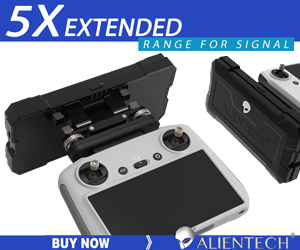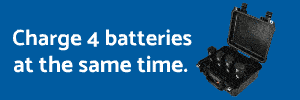Good evening. I having some trouble. Im flying a misson for a place that uses dronedeploy. I uploaded the mission and flew it and now when i look at the photos they are blurry. My camera setting on the pro 2 are at 3:2 jpg camera setting on A with ISO on auto, Aperture at 4 shutter at 1/30. I think the shutter should be faster but I have no idea on how to adjust. Im use to flying a matrice 300 where i can have everything on auto and then set shutter speed.
You are using an out of date browser. It may not display this or other websites correctly.
You should upgrade or use an alternative browser.
You should upgrade or use an alternative browser.
camera issues
- Thread starter Kosmo98
- Start date
1/30th is going to make mapping photos blurry, but why are you using those settings?My camera setting on the pro 2 are at 3:2 jpg camera setting on A with ISO on auto, Aperture at 4 shutter at 1/30.
Shooting in daylight with ISO100 and average scenes you would expect to use something like f5.6 at 1/500th.
Are you flying at night?
Or have you got a stupid and completely unnecessary ND filter on the lens?
If so, get rid of it if you are using the camera for stills.
Post one of the full-size jpg and the exif info might give some clues.
If you did have an ND filter on, which one was it? (ND 8, ND16 etc).
And you shouldn't be leaving ISO on auto.
Lock it down at 100 unless there's a good reason to use something different.
Last edited:
Not A Speck Of Cereal
Well-Known Member
- Joined
- Apr 26, 2019
- Messages
- 1,446
- Reactions
- 1,199
Not to be harsh, but the problem here is that you lack a basic understanding of photography. You can take suggested settings that people mention here and you might fix this mission, but not the next one.
If you're being paid for this job, you have misrepresented yourself and should perhaps refer them to someone who knows how to both fly the drone (run the mission) and also operate the camera. If you're doing this for yourself (not commercial, but recreational), then we can help, but it's not the best way to learn basic exposure in photography.
As Meta stated, you should not use AUTO ISO. If you lock it down at 100 and put everything else on AUTO, this could solve all of your problems, because this would force the camera to use a higher shutter speed. And yes, don't even think of using an ND filter until you properly understand why you are using it.
If you set the shutter speed, then that was not full AUTO, but is rather SHUTTER PRIORITY mode.
Your Mavic can do this too. Read the manual to see where, but in the same place that you set EXPOSURE to AUTO, you can also set it to SHUTTER PRIORITY. Put the ISO at 100, shutter at 1/125 and the camera will choose the aperture
Chris
If you're being paid for this job, you have misrepresented yourself and should perhaps refer them to someone who knows how to both fly the drone (run the mission) and also operate the camera. If you're doing this for yourself (not commercial, but recreational), then we can help, but it's not the best way to learn basic exposure in photography.
As Meta stated, you should not use AUTO ISO. If you lock it down at 100 and put everything else on AUTO, this could solve all of your problems, because this would force the camera to use a higher shutter speed. And yes, don't even think of using an ND filter until you properly understand why you are using it.
Im use to flying a matrice 300 where i can have everything on auto and then set shutter speed.
If you set the shutter speed, then that was not full AUTO, but is rather SHUTTER PRIORITY mode.
Your Mavic can do this too. Read the manual to see where, but in the same place that you set EXPOSURE to AUTO, you can also set it to SHUTTER PRIORITY. Put the ISO at 100, shutter at 1/125 and the camera will choose the aperture
Chris
I am doing this for myself before I do it for money. I'm having a hard time finding a manual or video that explains how to set everything in auto so I can get good pictures from dronedeploy mission. I'm flying 65ft at 4mph.Not to be harsh, but the problem here is that you lack a basic understanding of photography. You can take suggested settings that people mention here and you might fix this mission, but not the next one.
If you're being paid for this job, you have misrepresented yourself and should perhaps refer them to someone who knows how to both fly the drone (run the mission) and also operate the camera. If you're doing this for yourself (not commercial, but recreational), then we can help, but it's not the best way to learn basic exposure in photography.
As Meta stated, you should not use AUTO ISO. If you lock it down at 100 and put everything else on AUTO, this could solve all of your problems, because this would force the camera to use a higher shutter speed. And yes, don't even think of using an ND filter until you properly understand why you are using it.
If you set the shutter speed, then that was not full AUTO, but is rather SHUTTER PRIORITY mode.
Your Mavic can do this too. Read the manual to see where, but in the same place that you set EXPOSURE to AUTO, you can also set it to SHUTTER PRIORITY. Put the ISO at 100, shutter at 1/125 and the camera will choose the aperture
Chris
A good place to start would be to find out what settings you used and why you were shooting at 1/30th sec and I can help you from there.I am doing this for myself before I do it for money. I'm having a hard time finding a manual or video that explains how to set everything in auto so I can get good pictures from dronedeploy mission. I'm flying 65ft at 4mph.
Did you have an ND filter on?
What strength filter was it?
Can you post one of the image files so I can see details in the metadata?
65 ft seems very low for a mapping mission and 4mph is much slower than what's usually used.
The default settings that DroneDeploy would offer would be something like 246 ft at 34 mph.
Is there a particular reason that you ended up with 65 ft and 4mph?
If you can describe the site you want to map, it would help.
WouterB
Member
If you plan to do this for money, first start by understanding how a camera works. Not a drone camera, any camera. Learn about iso, aperture, shutterspeed, white balance, etc. When you understand that, then you have to get at least a bit experienced at applying all those thing in real life. Only then start thinking about making money with a cameradrone.I am doing this for myself before I do it for money. I'm having a hard time finding a manual or video that explains how to set everything in auto so I can get good pictures from dronedeploy mission. I'm flying 65ft at 4mph.
There are literally thousands of free websites and youtube videos on these subjects, all you need to invest is time and effort.
For someone who came here asking for help, you don't seem very interested in finding a solution to your issue.I am doing this for myself before I do it for money. I'm having a hard time finding a manual or video that explains how to set everything in auto so I can get good pictures from dronedeploy mission. I'm flying 65ft at 4mph.
???
Good evening. I having some trouble. Im flying a misson for a place that uses dronedeploy. I uploaded the mission and flew it and now when i look at the photos they are blurry. My camera setting on the pro 2 are at 3:2 jpg camera setting on A with ISO on auto, Aperture at 4 shutter at 1/30. I think the shutter should be faster but I have no idea on how to adjust. Im use to flying a matrice 300 where i can have everything on auto and then set shutter speed.
You are in the Mavic 2Pro section of the forum, so I shall work on the assumption that is the drone you are trying to use. I cannot help with the auto flying stuff because I have never used it, not even waypoints, because I don't think it will work waypoints for still pictures (I don't shoot video very much). However, I can help with the photographic aspects of your questions.
FIRST AND FOREMOST: turn off AUTO. If you want the best results you have to do it the old fashioned way in Manual, it isn't hard provided you can interpret the information that comes back on your screen.
BLURRED IMAGES: can be from one of two reasons, either the focus was off (the camera wasn't focussed on your subject but elsewhere), or from what is known as 'camera shake' - which is where the image moves across the frame too fast for the shutter speed chosen to freeze the motion. Actually, it could also be from fogging on your lens, but that would also show up as milky images.
THE CAMERA MENUS: the three lines with dots under the shutter button on screen are where you find your camera setting menus. You need to explore these with the drone on the ground, do it in your home if you want - take the props off and you have no chance of damaging anything! You can then play to your heart's content at doing all sorts of stuff. You can set the button on the back of the controller ( button C is it? - the left hand one) to flip the camera from straight ahead to straight down at the press of the button. This is very useful and much faster than using the gimble adjustment wheel.
You can set the aperture (but you can in use with the right hand adjuster wheel as well - move the wheel left and the aperture opens up (smaller f number = bigger aperture (larger hole for the light to pour through), move it right and the aperture closes down, bigger number... it starts at f2.8, the largest aperture (but smallest number) this gives you the most light entering the lens and therefor the fastest shutter speed available for the ISO chosen. ALWAYS use 100 unless the lighting situation absolutely demands you use the nexct one up. Closing the lens down will give you a slower shutter speed but a greater depth of focus - but you don't need to worry from up high because you are using a wide angle lens and the depth of focus is great anyway from any kind of distance. At 65ft (20 meters/yards ish) I would start to close the lens down a bit and use maybe f4 or f5, somewhere around there.
The gear wheel menu (right hand icon) is where you can choose to turn on the grid pattern on screen (VERY useful for composition and lining up accurately any graphic lines in the picture), the HISTOGRAM, always have it turned it on, I leave it on permenantly. This is a graph of the actual image exposure, regardless of what you see on the screen, it tells you if areas are too black or whites are blown out and lost - plenty of videos of using the histogram in photography, on ANY camera not just a flying one. The histogram appears on your screen bottom left next to the little flying map.
Shoot RAW images and select the option to save the RAW images from any panoramics/HDR you might shoot too.
Get used to being able to control the camera for exposure and focus (you press on the screen where you want the camera to focus, so select your main subject to focus on. DO NOT expect the auto stuff to get it right.)
That will do you for now otherwise you will start to suffer from information overload - you need to understand exposure before you do much else.
Similar threads
- Replies
- 3
- Views
- 495
- Replies
- 10
- Views
- 753
- Replies
- 6
- Views
- 2K
- Replies
- 3
- Views
- 461
Share:
DJI Drone Deals
New Threads
-
EXO Drones: Autonomous Drones will Revolutionize Facade Cleaning.
- Started by The Droning Company
- Replies: 0
-
Transforming Landscapes with 3D LIDAR Mapping.
- Started by The Droning Company
- Replies: 0
-
-
-










